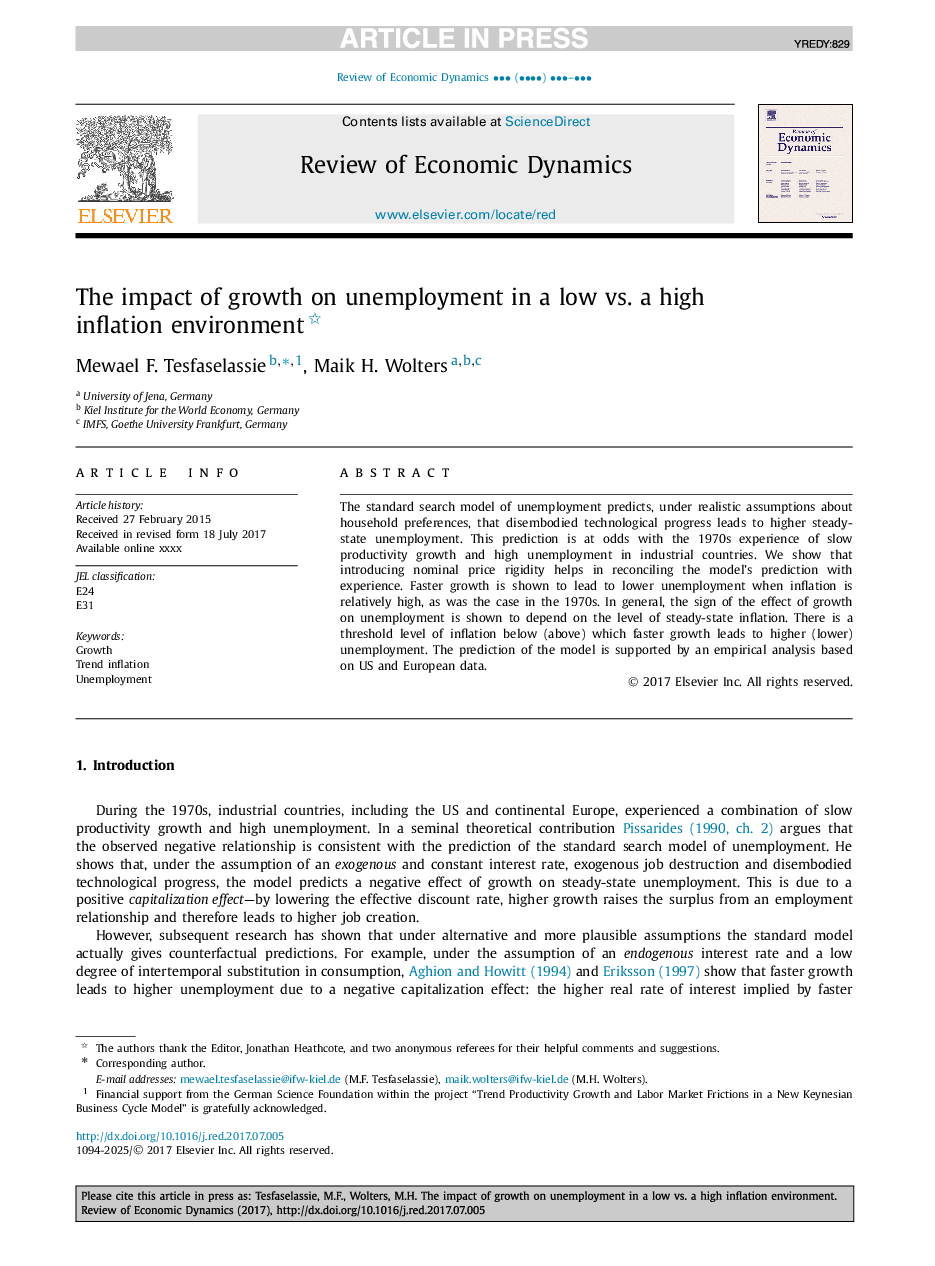| Article ID | Journal | Published Year | Pages | File Type |
|---|---|---|---|---|
| 7388150 | Review of Economic Dynamics | 2018 | 17 Pages |
Abstract
The standard search model of unemployment predicts, under realistic assumptions about household preferences, that disembodied technological progress leads to higher steady-state unemployment. This prediction is at odds with the 1970s experience of slow productivity growth and high unemployment in industrial countries. We show that introducing nominal price rigidity helps in reconciling the model's prediction with experience. Faster growth is shown to lead to lower unemployment when inflation is relatively high, as was the case in the 1970s. In general, the sign of the effect of growth on unemployment is shown to depend on the level of steady-state inflation. There is a threshold level of inflation below (above) which faster growth leads to higher (lower) unemployment. The prediction of the model is supported by an empirical analysis based on US and European data.
Related Topics
Social Sciences and Humanities
Economics, Econometrics and Finance
Economics and Econometrics
Authors
Mewael F. Tesfaselassie, Maik H. Wolters,
